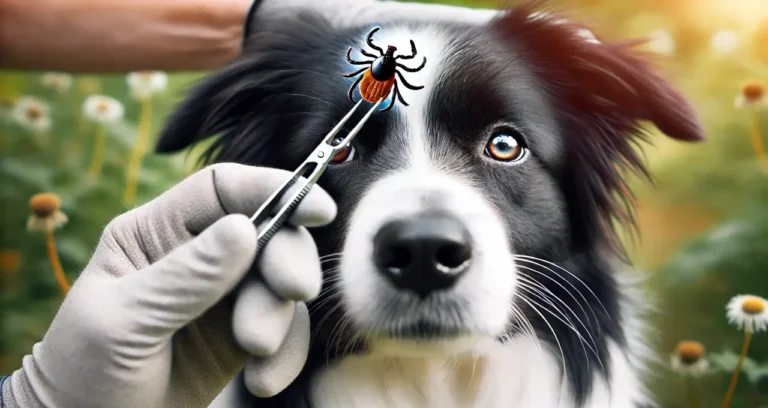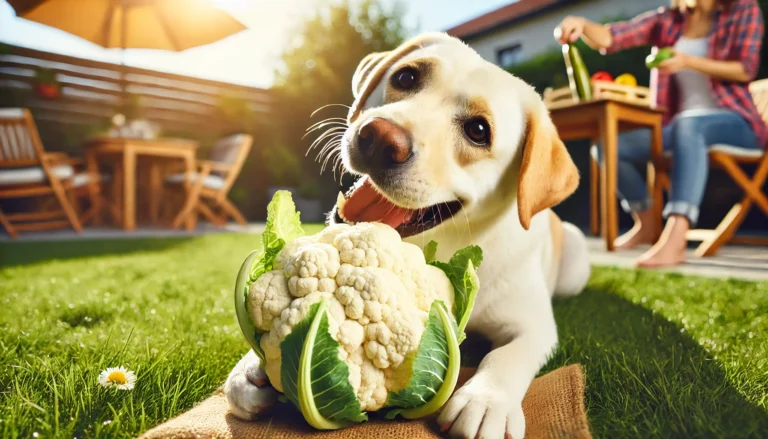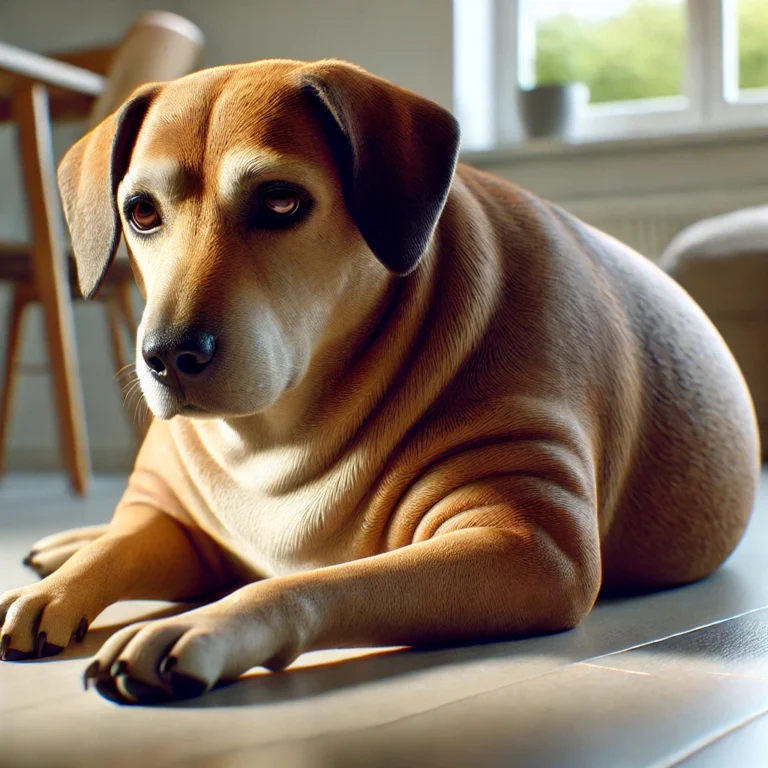Lipoma in Dogs: Causes, Symptoms, and Treatment
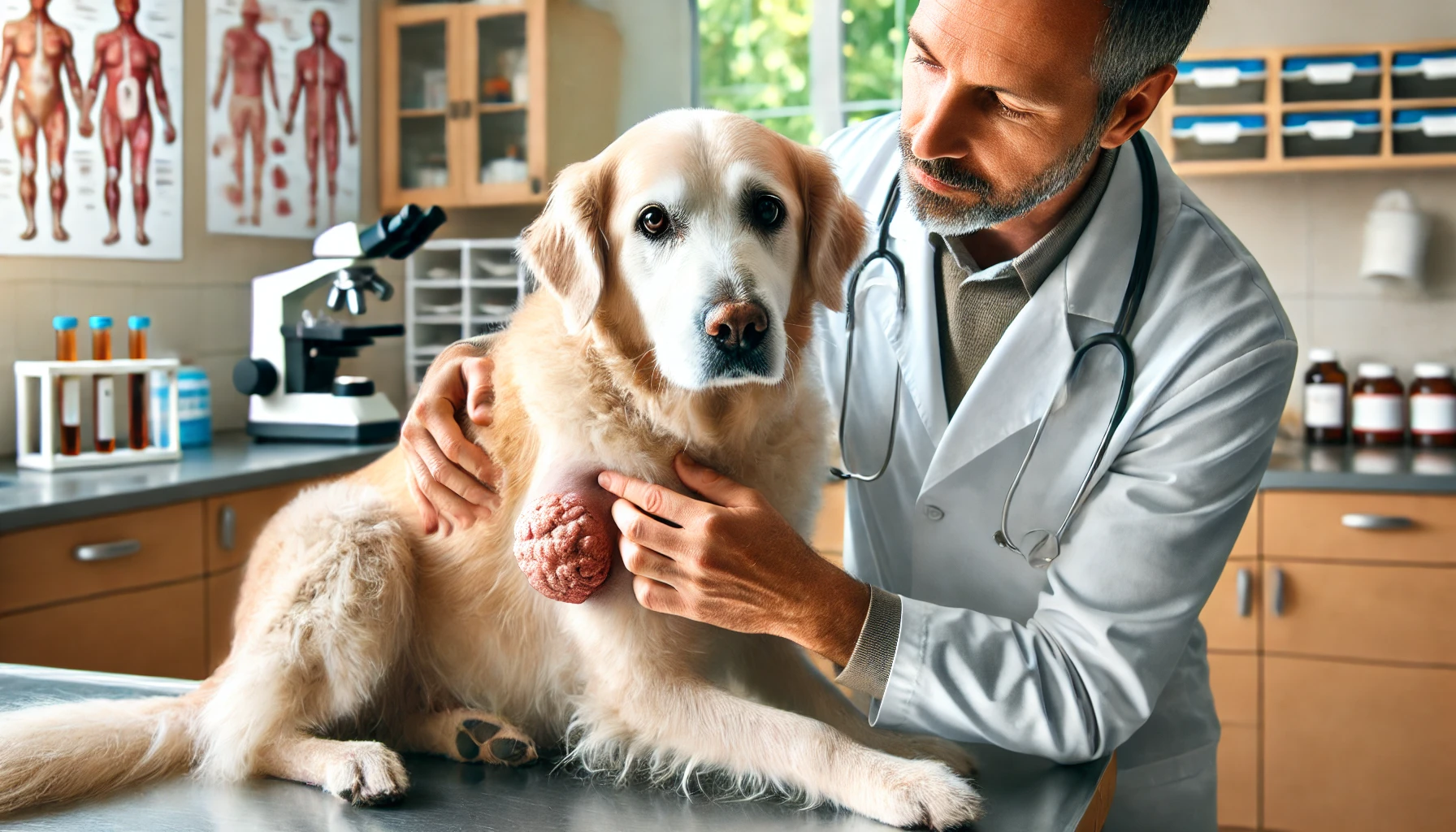
Lipoma in Dogs
Should lipomas in dogs be removed?YES!Lipomas in dogs are among the most common types of benign tumors found in pets, often referred to as fatty lumps on dogs or fatty tumors in dogs. These soft, movable lumps can occur anywhere on a dog’s body and are made up of fat cells. Although they are generally harmless, they can sometimes grow large enough to cause discomfort or interfere with a dog’s movement. Understanding the causes, symptoms, and treatment options for lipomas in dogs can help pet owners make informed decisions about their pet’s health.
Types of Lipomas:
- Simple Lipomas
- The most common type of Lipomas in dogs.
- Typically soft, round, and movable under the skin.
- Commonly referred to as fatty lumps on dogs.
- Infiltrative Lipoma
- These are rarer and can invade nearby muscle tissue.
- They may require surgical removal due to their aggressive nature.
- Atypical Lipomas
- Larger or more irregular Lipoma in dogs that might require closer monitoring.
- Often located in areas like the chest or abdomen.
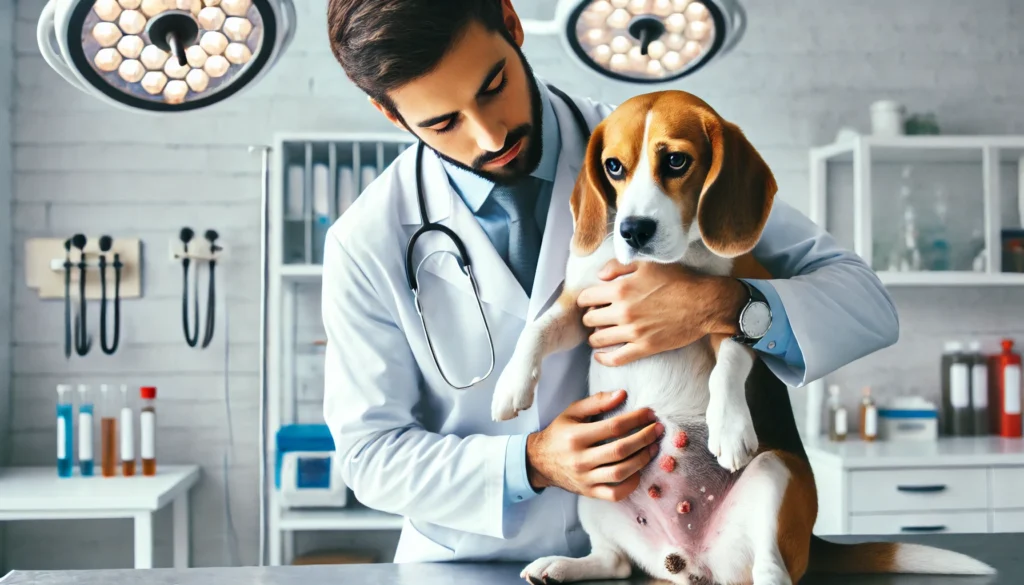
Causes of Lipoma in Dogs
Lipoma in dogs form due to an accumulation of fat cells, but the exact cause isn’t always clear. However, several factors may contribute to their development:
- Genetics
Certain breeds, like Labradors, Golden Retrievers, and Dobermans, are more prone to developing Lipoma in dogs due to genetic predisposition. - Age
Middle-aged and senior dogs are more likely to developLipoma in dogs, as their bodies may accumulate fat deposits under the skin over time. - Obesity
Overweight dogs are at a higher risk of developing fatty tumors in dogs. Excess fat can lead to a higher likelihood of lipoma formation. - Diet and Lifestyle
A poor diet and lack of exercise may increase the likelihood of lipomas forming. - Hormonal Imbalances
Imbalances in hormones, such as insulin or cortisol, may contribute to the development of fatty growths.
Symptoms of Lipoma in dogs
The symptoms of lipomas are relatively straightforward but can vary based on the size and location of the growth. Here’s what to look for:
- Soft, Movable Lumps
- Lipomas often feel soft and squishy to the touch.
- They are usually movable under the skin and do not cause pain.
- Common Locations
- Lipomas in dogs are frequently found on the dog’s belly, chest, legs, and back.
- They can also develop on the neck, armpits, or under the rib cage.
- Large Lipomas
- Some Lipoma in dogs can grow large, causing discomfort or interfering with mobility.
- Large lipomas in dogs may require surgical removal.
- Multiple Lipomas
- Dogs can develop more than one lipoma, especially as they age.
- Symptoms of Infiltrative Lipomas
- Stiffness or difficulty moving, especially if the lipoma invades muscle tissue.
- Lumps that feel firm or irregular compared to typical lipomas.
Diagnosing Lipoma in dogs
If you notice a lump on your dog, it’s important to have it checked by a veterinarian. Here’s how lipomas are diagnosed:
1. Physical Examination
- Veterinarians can often identify lipomas by touch.
- Soft, movable lumps are typically indicative of lipomas.
2. Fine Needle Aspiration (FNA)
- A small sample of cells is taken from the lump using a thin needle.
- FNA can confirm if the lump is a benign lipoma or a more serious condition like liposarcoma.
3. Biopsy
- In cases where the lipoma is atypical, a biopsy may be performed to rule out cancer.
4. Imaging Tests
- Ultrasound or X-rays may be used to assess the depth of larger Lipoma in dogs, especially if they are located near muscles or vital organs.
Treatment for Lipoma in dogs
While most lipomas don’t require treatment, some may need intervention based on their size, location, or impact on the dog’s quality of life.
1. Monitoring
- Small, non-invasive lipomas can be monitored during routine veterinary check-ups.
2. Surgical Removal
- Indicated for large lipomas or those causing discomfort.
- The cost of lipoma removal for dogs can vary depending on the size and location of the tumor.
- Post-operative care includes managing the surgical site and monitoring for recurrence.
3. Non-Surgical Options
- Weight management through diet and exercise may help reduce the size of small lipomas.
- Natural remedies like herbal supplements are sometimes used but should be discussed with a veterinarian.
DO YOU KNOW
Osteosarcoma in dogs is the most common and one of the most aggressive forms of bone cancer found in veterinary practice. This malignant bone tumor primarily affects large and giant breed dogs and often presents with rapid progression, severe pain, and the potential for metastasis (spread) to other parts of the body.
Preventing Lipomas in Dogs
While lipomas cannot always be prevented, there are steps pet owners can take to reduce the risk:
- Maintain a Healthy Weight
- Obesity increases the risk of fat deposits on dogs, so regular exercise and a balanced diet are essential.
- Regular Veterinary Check-Ups
- Early detection and monitoring can help manage lipomas effectively.
- Avoid High-Fat Diets
- Diets high in fat can contribute to the formation of lipomas. Feed your dog high-quality, nutrient-rich food.
- Keep Active
- Regular physical activity helps prevent excess fat buildup under the skin.
Living with Lipomas
Dogs with lipomas can still live happy, healthy lives. Here are tips for managing their condition:
- Monitor Changes: Keep an eye on existing lipomas for growth or changes in texture.
- Report Symptoms: If you notice fast-growing lipomas, bleeding, or discomfort, consult your veterinarian immediately.
- Post-Surgery Care: If your dog undergoes surgery, ensure proper wound care and follow-up visits to prevent complications.
Conclusion
Lipomas are one of the most common types of benign tumors in dogs and are usually harmless. By understanding their causes, symptoms, and treatment options, pet owners can ensure their furry friends remain healthy and comfortable. Regular check-ups, a balanced diet, and maintaining a healthy weight are essential in managing or preventing lipomas in dogs. If you notice any lumps on your dog, always consult a veterinarian to ensure proper diagnosis and care.
Should lipomas in dogs be removed?
Whether or not lipomas in dogs should be removed depends on their size, location, and impact on the dog’s quality of life. Most lipomas are benign and do not require removal unless they grow large enough to cause discomfort or impede mobility. For example, if a lipoma in dogs develops near a joint or muscle, it may restrict movement and necessitate surgical removal. Infiltrative lipomas, which grow into surrounding tissues, may also require removal due to their invasive nature. Regular veterinary check-ups are crucial to monitor the growth and ensure it remains harmless. Always consult a veterinarian before deciding on surgery, as not all lipomas pose a threat to a dog’s health.
What is the average age of a dog with a lipoma?
Lipomas in dogs are most commonly found in middle-aged to senior dogs, typically between the ages of 7 and 12 years. However, younger dogs can occasionally develop lipomas, particularly if they belong to a breed predisposed to these fatty tumors. The likelihood of discovering a lipoma in dogs increases with age, as older dogs are more prone to developing fatty deposits under the skin due to changes in their metabolism and immune system. Regular veterinary check-ups for aging dogs are essential to monitor for any abnormal growths, ensuring they are benign and do not interfere with the dog’s overall health and mobility.
What dog breeds are prone to lipomas?
Certain dog breeds are genetically predisposed to developing lipomas. Breeds such as Labrador Retrievers, Golden Retrievers, Dobermans, and Weimaraners are particularly prone to these fatty tumors. Studies show that larger breeds are more likely to develop a lipoma in dogs, although smaller breeds can also be affected. These tumors are generally benign but may require monitoring or treatment if they grow large or interfere with the dog’s comfort. If your dog belongs to a breed prone to lipomas, regular veterinary visits are vital for early detection and management. Understanding your dog’s genetic predispositions can help in preventing complications associated with lipomas.
How do you get rid of lipomas on dogs at home?
While you cannot surgically remove a lipoma in dogs at home, you can take steps to manage or potentially reduce the size of the lipoma naturally. Improving your dog’s diet and ensuring they maintain a healthy weight can help slow the growth of fatty tumors. Providing a high-quality, low-fat, and nutrient-rich diet is essential. Incorporate omega-3 fatty acids and antioxidant-rich foods that promote overall health. Regular exercise can also prevent excess fat buildup under the skin. However, any noticeable changes in a lipoma should be evaluated by a veterinarian. Home care focuses on management rather than complete removal, as surgical intervention should only be performed by professionals.
How to naturally shrink a lipoma?
To naturally shrink a lipoma in dogs, focus on dietary and lifestyle changes. Begin by feeding your dog a balanced, low-fat diet that includes anti-inflammatory ingredients like turmeric and omega-3 fatty acids, which may help reduce fat deposits under the skin. Regular exercise is crucial for maintaining a healthy weight and reducing excess fat that could contribute to lipoma growth. Some dog owners explore natural supplements like apple cider vinegar or herbal remedies, but these should always be used under veterinary guidance. While natural methods may help manage lipomas, significant reductions in size are not guaranteed, and veterinary monitoring is still essential.
What food is good for dogs with lipomas?
For dogs with lipomas, a high-quality diet rich in antioxidants and anti-inflammatory nutrients can be beneficial. Foods such as lean proteins, sweet potatoes, blueberries, and carrots are great for maintaining a healthy weight and reducing inflammation. Omega-3 fatty acids, found in fish oil or flaxseed, are particularly useful for managing fat metabolism and may help slow the growth of a lipoma in dogs. Avoid feeding your dog high-fat or processed foods, as these can exacerbate fatty tumors. Always consult with a veterinarian to develop a diet plan tailored to your dog’s specific needs and to ensure their overall health is supported.
Can dog lipomas shrink on their own?
While lipomas in dogs are generally benign and slow-growing, they rarely shrink on their own. Most lipomas maintain their size over time, though some may grow larger, especially in overweight dogs. Managing a lipoma in dogs through a healthy diet, weight control, and regular exercise can prevent further growth and potentially reduce their prominence. However, if you notice a lipoma shrinking or changing unexpectedly, consult your veterinarian immediately to ensure there is no underlying health issue. Surgical removal is the most effective method for eliminating lipomas, but natural shrinkage is uncommon without intervention.
Can lipomas turn cancerous?
Lipomas in dogs are almost always benign and do not turn cancerous. However, there is a rare, more aggressive form called liposarcoma, which can mimic the appearance of a benign lipoma but is malignant. Regular monitoring of any lipoma in dogs is essential to ensure that it does not grow rapidly, become irregular in shape, or cause discomfort. Infiltrative lipomas, while not cancerous, can invade surrounding tissues and require more extensive treatment. If you notice changes in a lipoma, such as hardness, irregularity, or rapid growth, consult your veterinarian for further testing to rule out malignant conditions like liposarcoma.
What Food to Avoid for Lipoma?
If your dog has lipomas, it’s important to avoid foods that contribute to excess fat deposits and inflammation, which can potentially worsen the growth of these benign tumors. High-fat and highly processed foods, such as table scraps, greasy treats, and processed dog food, should be eliminated from their diet. Additionally, avoid foods with artificial additives, preservatives, and excess carbohydrates, as they can lead to weight gain and increased fat accumulation. For dogs with a lipoma in dogs, feeding a low-fat, nutrient-rich diet with lean proteins, vegetables, and omega-3 fatty acids can help maintain their weight and reduce the likelihood of further lipoma growth. Always consult a veterinarian for specific dietary recommendations.
What Is Inside a Lipoma?
A lipoma in dogs consists of a collection of fat cells encased in a thin, fibrous capsule. These fat cells, or adipocytes, are benign and do not invade surrounding tissues. The contents are typically soft, movable, and have a greasy or oily consistency. Lipomas are non-cancerous growths and are usually harmless, but they can sometimes grow large enough to interfere with a dog’s mobility or cause discomfort. In rare cases, a lipoma may contain other types of tissue, such as connective tissue, which can make it firmer or harder. If you notice changes in a lipoma’s size or texture, consult your veterinarian for further evaluation.
How to Remove Lipoma Without Surgery?
While surgery is the most effective way to remove a lipoma in dogs, some non-surgical methods can help manage or reduce its size. These methods include dietary changes, weight management, and natural remedies. Feeding your dog a low-fat, anti-inflammatory diet rich in omega-3 fatty acids, turmeric, and antioxidant-rich foods can support overall health and potentially slow lipoma growth. Regular exercise helps maintain a healthy weight, which is crucial for reducing fat deposits under the skin. Some pet owners explore natural remedies like apple cider vinegar or herbal treatments, but these approaches should always be used under veterinary supervision. It’s important to note that non-surgical methods may not fully eliminate lipomas.

